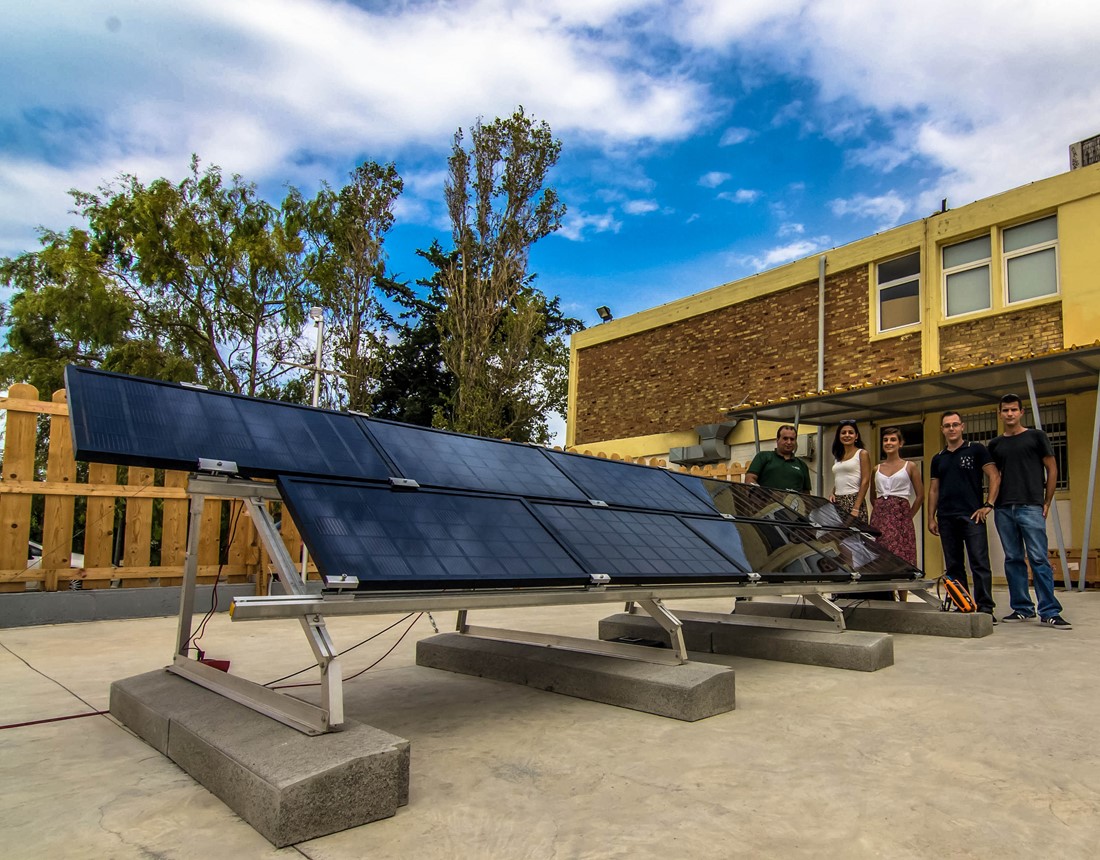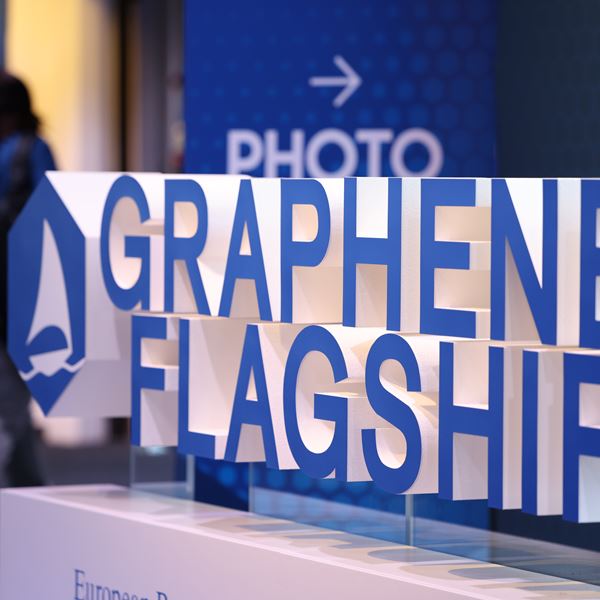Energy Generation
Next gen solar cells
The Energy Generation Work Package addresses different approaches for energy harvesting: harnessing the energy of the sun with large-area photovoltaics and producing hydrogen with water electrolysers.
The last 10 years
This ten-year journey allowed us to bridge the gap between laboratory prototypes and up-scaled demonstrations, targeting applications in large-area solar panels for on-grid electricity generation, and flexible solar modules to power Internet of Things (IoT) devices. We developed various graphene and related materials (GRMs) and integrated them with perovskite solar cells to enhance both stability and efficiency. Technical issues that had slowed down the photovoltaics upscaling process have been resolved, including the replacement of noble metals, the processing of titanium dioxide at low temperatures and the optimisation of laser patterning. Moreover, GRM-based conductive pastes and novel encapsulants led to stable and efficient modules with low capital expenditure (CAPEX).
On the fuel cell front, we developed graphene-enabled supports for electrocatalysis. Initially, they were meant to promote only the oxygen reduction reaction, but at a later stage, electrocatalysts featuring a graphene-based support were also developed to promote the hydrogen evolution reaction and the oxygen evolution reaction at low-temperatures. We also devised graphene-based anticorrosion coatings, as well as easily scalable solid-state and liquid-based approaches to obtain enough inexpensive graphene. The resulting demonstrators showed an outstanding performance and durability in the electrochemical processes.
This year’s progress
The Energy Generation Work Package’s effort led to the world’s first outdoor demonstration of a solar farm with 4.5 m2 graphene–perovskite panels. These delivered a peak power exceeding 250 W and demonstrated a remarkable stability: only a 20% reduction in the performance over eight months. Gathered in an open data repository, all experimental data will be of interest to the photovoltaics industrial sector and will lay the groundwork for commercialisation targets. We reached high technology readiness levels (TRLs); TRL 6 in the solar farm demonstration, TRL 4-5 in the transparent conductive electrodes based on exfoliated graphene hybrids, and TRL 5 in the fully printed, flexible perovskite solar modules with stabilised output power for indoor applications. Finally, a life cycle assessment (LCA) model indicated that this technology might compete with those calculated for European 2050 electricity mix scenarios.
We devised graphene-enabled electrocatalysts that promote key processes for the operation of fuel cells and electrolysers, exhibiting a performance and durability beyond the state-of-the-art. These are also free from or with minimal concentrations of strategic elements, such as platinum group metals.
The GRM-enabled functional components, mostly supports and electrocatalysts, have already been synthesised in batches of 5-100 grams and could easily be scaled up. Such functional components are already available on the market for demo purposes and sampling by one of our industrial partners, BRETON.

Emmanuel Kymakis, Work Package Leader
A new generation of scientists was trained, becoming proficient in a hot field with profound implications for the future of mankind.”
Work Package Leader

The solar panel consists of several layers: glass with fluorine-doped tin oxide (FTO), compact titanium dioxide (TiO2) with graphene, mesoporous TiO2 with graphene, perovskite, fMoS2, poly(triarylamine) and gold. In the scale-up and sustainable mass production of this technology, gold can be replaced with an alternative material, such as graphene, other carbon materials or cheap metals. Credit: Nature Energy

References
Pescetelli, S. et al. Nature Energy 2022, DOI: 10.1038/s41560-022-01035-4
Zhang, H. et al. Nature Commun. 2022, DOI: 10.1038/s41467-021-27740-4
Castriotta, L. A. et al. Adv. Energy Mater. 2022, DOI: 10.1002/aenm.202103420
Di Noto, V. et al. ACS Catal. 2022, DOI: 10.1021/acscatal.2c03723
Lorandi, F. et al. Power Sources 2023, DOI: 10.1016/j.jpowsour.2022.232390
Latest Articles

Going green with graphene

Innovative Materials for EU partnership confirmed
On 20 March 2024, the European Commission (EC) adopted the second strategic plan for Horizon Europe, confirming the acceptance of the Graphene Flagship and Advanced Materials 2030 Initiative’s proposed Innovative Materials for EU partnership.

Graphene Flagship and the Advanced Materials 2030 Initiative present partnership proposal
The Graphene Flagship and the Advanced Materials 2030 Initiative organised an online workshop to present the progress of their preparatory work and how the proposed partnership is intended to contribute to the “Advanced Materials for Industrial Leadership” initiative.

The Graphene Flagship: The Voyage Ahead
Over the past decade, the Graphene Flagship created a unique community in Europe – an ecosystem for innovation in graphene and layered materials. Now - with 13 new projects - it’s time to expand and set sail for new horizons.

Global graphene market will continue to grow, researchers find
Meta-market analysis identifies composites, batteries and electronics as major application areas likely to drive the overall development of the graphene market towards mass production.

Ten years of research, innovation and collaboration: the Graphene Flagship and the 2DM community
The Graphene Flagship was funded to ensure that Europe would maintain its lead in graphene research and innovation following the scientific breakthrough of graphene’s isolation at the University of Manchester. The European Commission launched the unprecedented long-term and large-scale Flagship research initiatives to tackle major challenges in science and technology, bringing positive changes that benefit society and the economy and advance European leadership in technology and industry. A decade on, we are proud to say that the Graphene Flagship has delivered on its promise. The clearly achieved objectives within scientific excellence, as well as societal and economic impact are detailed inside these pages.

